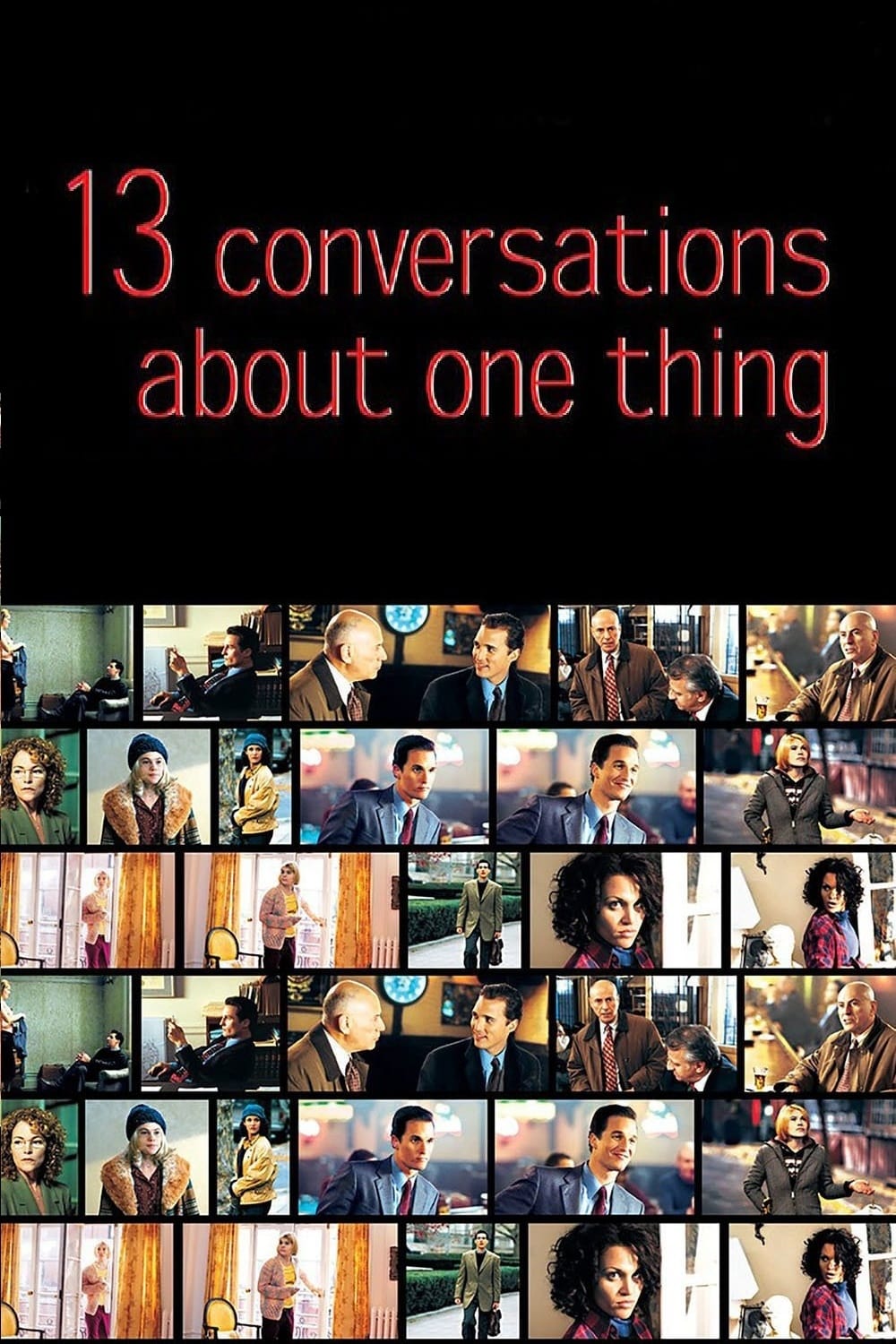
The lives of a lawyer, an actuary, a housecleaner, a professor, and the people around them intersect as they ponder order and happiness in the face of life's cold unpredictability.
06 Dec Thirteen Conversations About One Thing (2001)
The Dancing Expositor, the Fluttering White
It must be quite something to know about screenwriting and sit down to a bland sheet of paper. You can start with images, or characters or situations. You have to choose the type of thread and how you trace it, including the key decision about who you are. These sisters take a different approach, very writerly, very clever. They start with the simple question of happiness in a life and come at it from multiple directions, surrounding and probing it. The characters are secondary to the writer’s curiosity, and the “stories” even more incidental.
Sometimes you have a film that works with the viewer to grow a world and ideas; here, you simply watch as ideas grown on a page are revealed to you. Quite different, precious, but never close to life-altering or even viscerally engaging.
The film itself superficially resembles a “Short Cuts” or “Things You Can Tell” in that many episodes surround the emotional effect, but the differences are profound. Altman’s projects are driven by characters and situations that touch because they are allowed to ramble, inhabiting the space. The “Things You Can Tell” project is similar to this in that its several components are all about the same idea. But “Things” uses the device of one woman in many bodies, each with a different actress. In this project, the device is deliberate diversity of the characters, each facet having a discernible face.
I liked it. It is not highly cinematic, rather small theatre. It is not the stuff that changes one’s imagination. But it is literate, refined, and well woven in terms of the words.
As to the actors and their roles, one thing all these multifaceted projects have is the option for the viewer to select a backbone. As a matter of hardwiring we reflexively choose one thread as foreground and the others as background. For me, the anchor was Beatrice, which probably tells you a lot about me. The resurrection from disillusionment (with the opening of the doll’s eye!) was a bit heavy so far as the character, but DuVall as an actor really impressed me. All of these actors played characters with an unrecognised inner life. Some, like Turturro work with more self-referential techniques, but with her it seemed true.
Posted in 2003
Ted’s Evaluation — 3 of 3: Worth watching.


No Comments